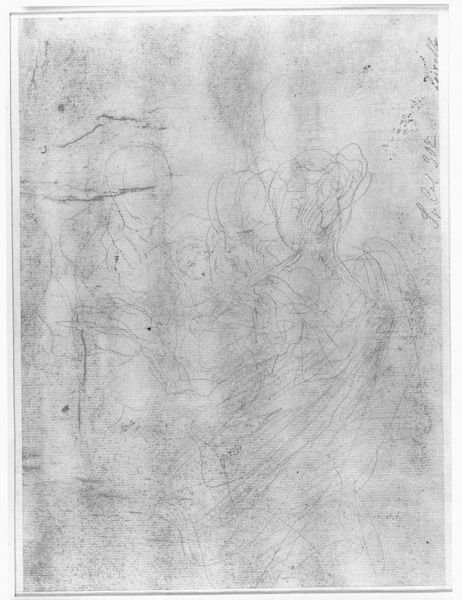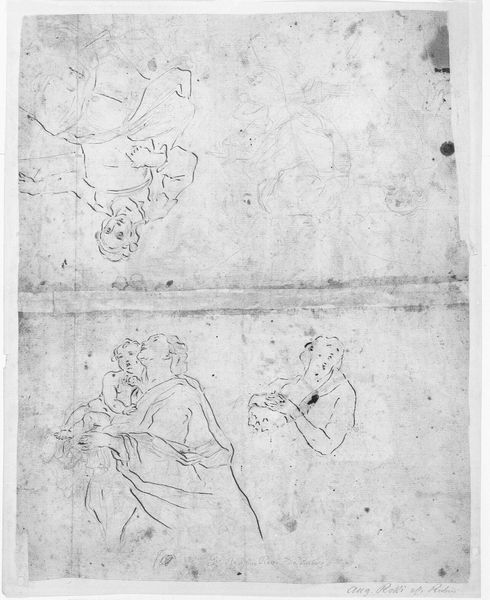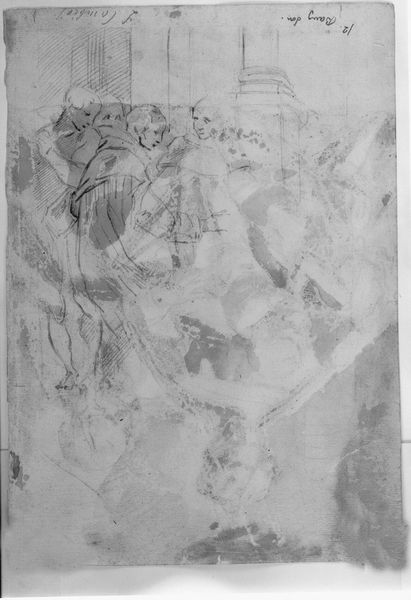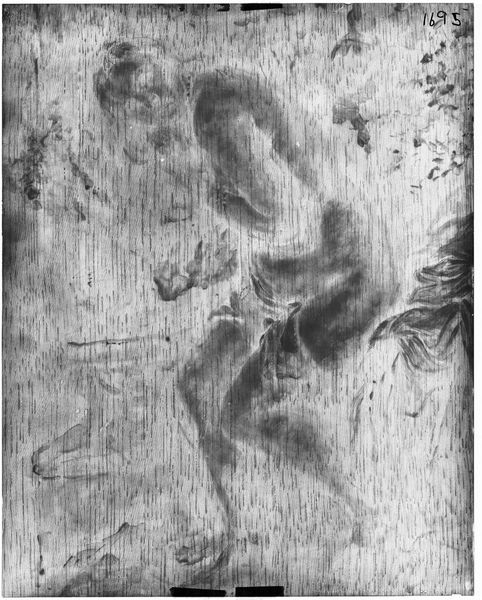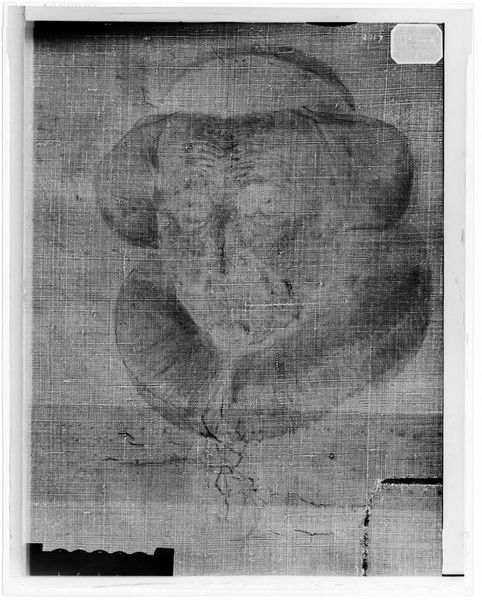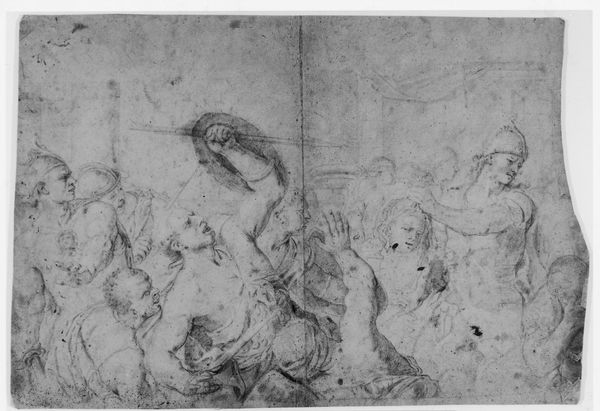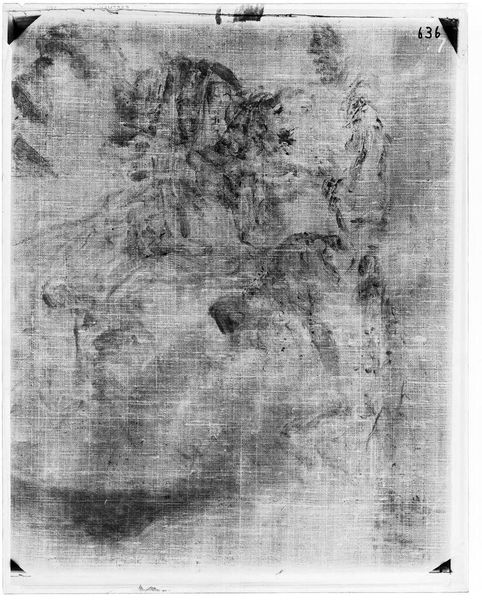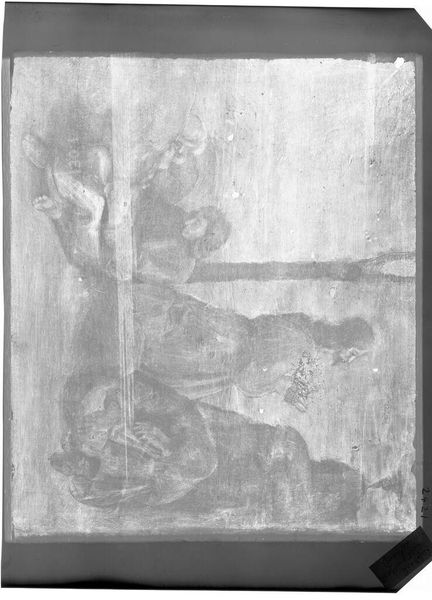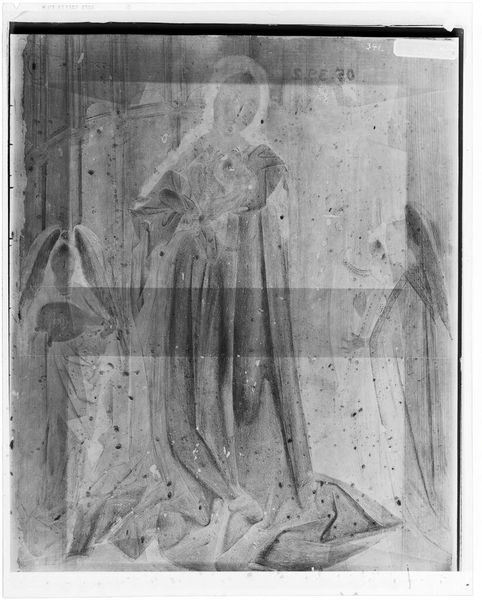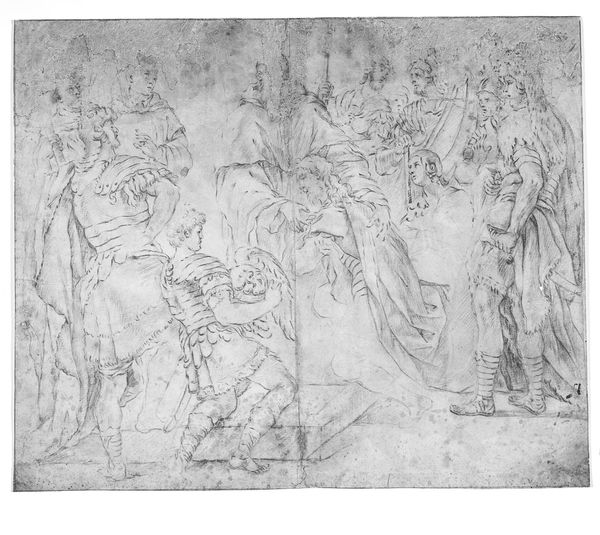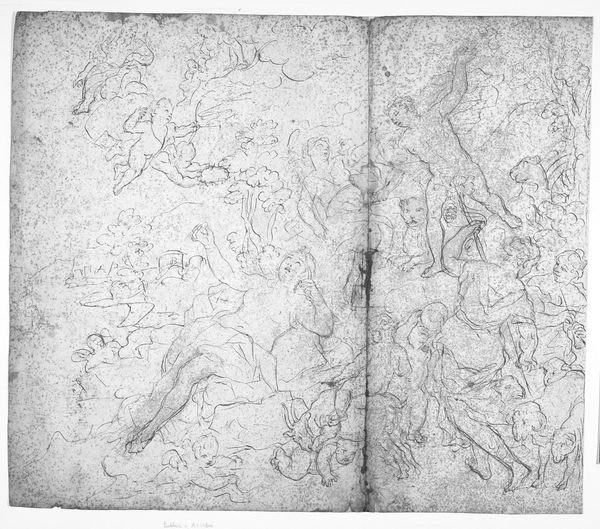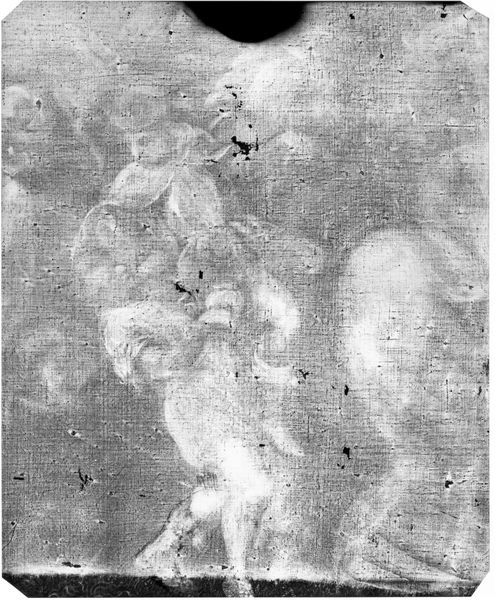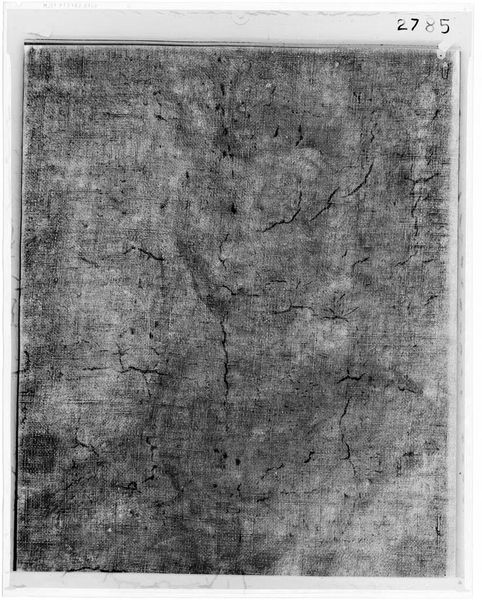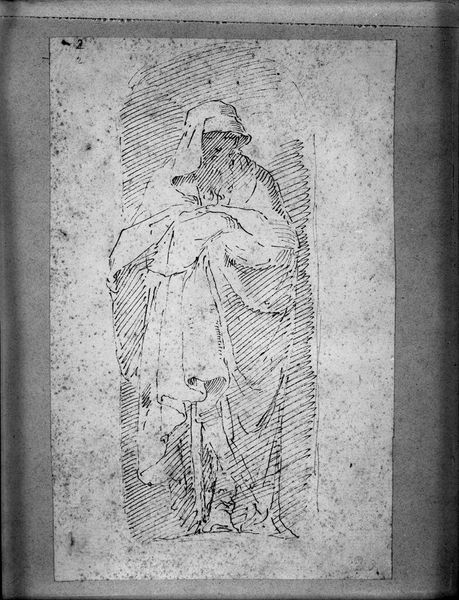
Adoration of a Banner with the Monogram of Christ. 1550 - 1631
0:00
0:00
drawing, paper, ink
#
drawing
#
narrative-art
#
charcoal drawing
#
figuration
#
paper
#
11_renaissance
#
ink
#
ink drawing experimentation
#
history-painting
Dimensions: 356 mm (height) x 272 mm (width) (bladmaal)
Editor: Here we have Giovanni Balducci's "Adoration of a Banner with the Monogram of Christ," created sometime between 1550 and 1631. It's rendered in ink and charcoal on paper. The hazy quality makes it look ethereal. What stands out to you in terms of its visual structure? Curator: Observe the clear division of the composition. Balducci uses a strong horizontal axis to separate the earthly realm from the celestial. Notice how the figures below, rendered with earthier tones, ground the image, whereas the lighter, more diffused figures above suggest a divine, boundless space. How does this contrast contribute to the overall meaning, do you think? Editor: I guess it emphasizes the distance and difference between humans and the divine, but also a connection since they're both in the same picture plane. Does the texture contribute to that reading, too? Curator: Precisely! The contrasting textures are key. The rough strokes of the charcoal used below, depict humanity in detail, versus the blended inks forming ephemeral godly apparitions. This dialectical relationship between line and form highlights not only separation, but a visual link—a structural bridge. We can interpret the intentional tension between materiality and ethereality. Editor: So, even without knowing the specific story, we can understand relationships and tensions purely through how the artist used materials and organized the composition. That's really helpful to see. Curator: Indeed. And consider, the paper itself is an active participant. Its aging and imperfections, a beautiful textural complexity. We gain insight into art by understanding its formal and material language. Editor: This makes me look at drawings with completely new eyes, searching for those deliberate, communicative formal choices. Curator: That’s exactly the point. By attending closely to the artwork’s internal language, we reveal the core message.
Comments
No comments
Be the first to comment and join the conversation on the ultimate creative platform.
